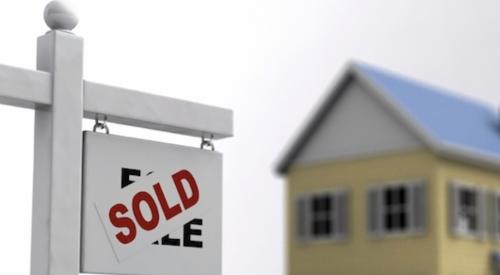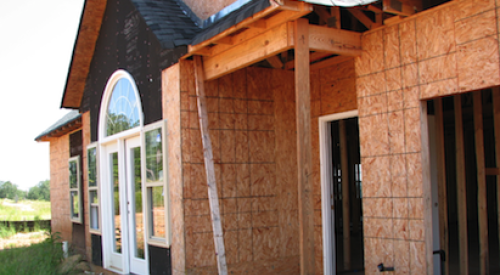|
Contingencies are killing the move-up market. Balky home shoppers often refuse to buy the new home they really want unless the purchase contract carries a clause requiring sale of their existing home. It's a sham, a negotiating ploy. Don't fall for it.
What they really mean when they say, "I can't sell my home" is, "I can't sell it for the overheated price my neighbor got three years ago."
Many of these contingent sales "contracts" carry microscopic down payments — as little as $500 — and even those are often refundable. "Contingencies are nothing more than questionable deposits," says home marketing guru Rich Elkman of Philadelphia-based Group Two Advertising, "but many builders believe they have to use them to get their hook into a buyer."
If you must sell houses with contingencies, treat them as what they really are: a temporary stepping stone toward a real down payment, one a mortgage lender will actually recognize, like five or 10 percent of the purchase price. Never take the house and/or lot off the market, because in many areas of the country 50 percent or more of contingent sales fall out. Don't take the chance of passing up a real sale for a phony one.
And in the meantime, attack the faulty logic behind the contingency with empathy for the welfare of your customers. They need to know what you know: that contingencies do no good for anyone and harm most the prospects hiding behind them. Here's a litany of sales tactics you can use to bring prospects to sound thinking on this issue, developed by some of the best minds in new-home sales. You can move people into non-contingent contracts.
You can kill the contingency — dead.
Blast 'Phantom Profits'Sales trainer Bob Schultz of New Home Specialist Marketing Group in Boca Raton, Fla., says no one can truthfully say, "I can't sell my house."
"Existing homes sell in every market, all the time," Schultz says. "What they really mean is, 'I can't sell it for what I think it's worth.' They don't want to 'lose' the difference between what their house might have sold for in 2005 and what it will fetch today."
Schultz calls the difference "phantom profits" and suggests a simple question to unravel the faulty logic behind the belief this is anything that can be "lost." "Just ask, 'What do you think the price of this model home would be if the market were still like it was in 2005?' The answer is, of course, even higher than the 2005 price of their existing home. Then you tell them the reason: 'This house has all the new features and benefits your old home will never have!'"
What sales agents must do, Schultz says, is explain that buying a new home allows people to transfer the equity they've built up in their old home to a new one that will always increase in value faster than the inferior older home. "Once we get prospects thinking about the market logically, they're moving in our direction," Schultz says. "They won't write a check on the spot, but they're thinking it through — getting past the psychological barrier of phantom profits."
Then there's the kick in the pants: "Just mention that if they wait for the market to come back to that pricing level," Schultz argues, "their kids will have to stay in their present school for many more years, they'll continue paying those exorbitant costs to heat and cool the old place, and the new home that's available today — on that lot by the park — will be gone."
Control the ResaleEvery new-home sales expert and successful sales manager we interviewed for this report was adamant that, if you take a contingent contract, you must take active control of the effort to sell that existing home.
"Get an accurate appraisal," says Houston, Texas-based sales management consultant Tom Richey. "Get the right real-estate broker listing the home and the right Realtor marketing it. Make sure enough money is spent on advertising and open houses. See to it that the house is staged correctly and the owner is trained to show it when the agent isn't there. Get a good sign in the yard. Air-Wick it so it smells fresh. Let's really push it."
If the prospects are really serious about getting out of that existing home, they will agree to sell it at the appraised value or less, says Satellite Beach, Fla.-based sales trainer Bill Herring. "And we can get a really professional Realtor — one of ours — to list it for 3 percent commission rather than the standard 6 percent. He'll take it at a discount because he knows the owner is motivated. It's going to sell fast. And the reduced listing fee allows our prospect to lower his price even more."
Bob Schultz says this process shouldn't be compromised, even if the prospects are from out of town. "Even if you're selling them a house in Florida, and their existing home is in New Jersey, we have a wealth of resources online that allow us to take control of the resale process," he reasons.
You can identify three or four brokers from their home zip code, call them and ask if they're interested in the referral, Schultz advises. "If I call four, I know I can find one that has the qualifications we require and will take the listing at a discounted listing fee, because they know this listing is being spoon-fed to them by a motivated seller."
Construction-to-Perm Financing Removes Need for ContingencyA loan that rolls automatically from construction financing into a permanent mortgage has the ability to negate any need for a contingent sales contract, especially for move-up buyers in the custom home market.
"We're utilizing construction-to-perm financing exclusively," says Tom Davis, a long-time sales executive who recently moved into a new position as director of residential operations for Christopher Burton Homes, a Melbourne, Fla., custom builder in the $600,000 to $2 million price range. "That offers the built-in advantage that the buyer doesn't need to sell his existing home to sign a non-contingent contract and get us started building the new one."
Buyers with a good chunk of equity in a valuable existing home have this financing option, Davis explains, and it opens a window of opportunity for them to buy a new home from a custom builder at the low point of the market, then sell their current home 18 months later (as the new one nears completion), in a rising real-estate market.
"Home prices are now down to where people think we're close to the bottom, if not there already," Davis says. "We're now talking to more people than we have in a year, and we'll have a great year in 2008 because construction-to-perm loans allow people to tap the equity in their existing home — or move money out of the stock market — to make the down payment on their construction loan. The bank generally requires that to be 20 percent of our price for the new home. That gets us started. Then they have 12 to 14 months of construction time to wait for the market to come back before they even put their existing home on the market."
Right now, lot prices are low, construction prices are down, and interest rates are also low—so it's a great time to buy a new custom home, especially if the buyer believes market conditions will improve in 2009 and 2010. Davis says Burton only closed a few houses in 2007, but will close two this year before the end of April, "and we have six houses under construction priced between $1 million and $3 million, then three more due to start within the next couple of weeks."
It will be more than a year before those buyers' construction loans roll into permanent mortgages, giving them plenty of time to sell their current homes. "We have two buyers who just put their houses on the market because their new homes will close in May or June," Davis says.
"And interestingly, they've priced those existing homes very realistically. They will sell. The buyers are not looking for big gains. They just want to get into their new homes. They're tired of waiting."
|












